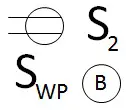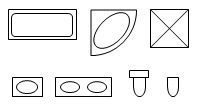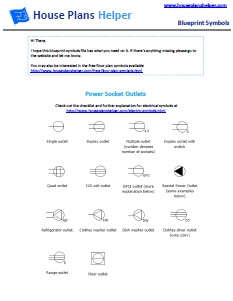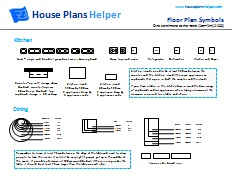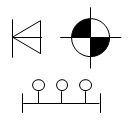- Home
- Blueprint Symbols
- Plumbing Symbols
Plumbing Symbols
This plumbing symbols page is for you if you’re in the process of designing a home and it’s time to check your blueprints for the impact that the plumbing arrangements will have on the design.
Lot's of people have been asking for a pdf of the symbols used on House Plans Helper. So I've got one for you. Go ahead and sign up below.
It's the heating engineer and plumber's job to make sure that the plumbing and the central heating systems are suitable for your home and are installed correctly - they make it work but making it beautiful isn't top of their minds.
I’ve included a checklist so that you can assess the impact that the plumbing arrangements will have on the home design.
This page is part of the blueprint symbols series.
Get your free blueprint symbols pdf which includes all the blueprint symbols in one file.
You can find symbols for bathroom and kitchen fittings on the floor plan symbols page.
Most of the plumbing symbols used on blueprints have become standard. Some architects or designers may use slightly different symbols. Always check with the key on your blueprints.
Radiator and plumbing symbols
The symbol for a pipe is just a line!
Tip for mobile browsers - these symbols are best viewed with your phone in landscape position.
 Radiator Symbol |
 Recessed radiator symbol |
 Enclosed radiator symbol |
 Water heater symbol |
 Hot water tank symbol |
 Thermostat symbol |
 Pump symbol |
 Tap valve symbol |
Plumbing symbols checklist
- Have a think about how your radiators are placed against the walls. It’s more expensive but you could think about having them recessed into the wall.
- Consider having radiator covers specified as part of your remodel or construction project.
- Remember that there are fabulous radiators available today. If you’re tight for space for a radiator on a wall remember you could get a tall radiator.
- Check that the width between supply and return pipes for radiators matches the width of the radiators that you’re planning to use.
- Take advantage of the location of your hot water tank if you have one. If you enclose it in a cupboard with a bit of extra space it makes a great room for drying things in, or keeping linens warm.
- Location of boiler. Are you happy with the location of the boiler? Think about whether or not the noise will be troublesome in any other rooms. The boiler also has an outlet on the outside of this. Make sure this is in an appropriate location.
- Location of controls. Make sure that all the heating controls are accessible. There might be several if you have asked for controls for each floor. Are the thermostats in a sensible position (including the height)? Controls should be placed between 36” and 48” (91.5 – 12.2cm) high. If you have kids at home the higher height is better. If the controls are at the back of a cupboard check that there’s a light planned with electric symbols and lighting symbols.
- Location of pipes. There will be pipes inside the house (running horizontally from room to room or vertically between floors). Check to see how the pipes are enclosed (if you want them enclosed). Sometimes it’s done well and forms part of the floor, or is cleverly enclosed in the back of a cupboard. Sometimes it’s a really ugly box running along the top or side of a wall. Just check and see where the pipes are running inside the house and that you’re going to be happy with the appearance.
- Also think about the noise of the toilet down pipe – that one can be noisy. It might be worth getting some sound insulation put around it.
- If you have pumps installed check that they’re installed somewhere where their noise won’t bother you. Especially for power showers – those pumps make quite a bit of noise.
- Are you happy with the location of the mains ‘stop’ tap in case you ever need to turn the supply of water off for the whole house.
- If you have any plumbing for gas make sure you know where to turn the gas off.

